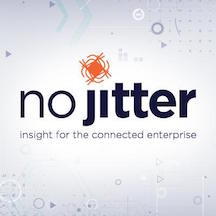APIs: Power Up Your UC
Communications is so much more than phone calls. You just need the right services to help you take advantage of advanced features.


Even almost 20 years after the Session Initiation Protocol started powering VoIP solutions, many businesses still cling to legacy TDM systems.
Cloud-based UC service, also known as UC as a service, or UCaaS, offers cost efficiency and ease of use that fits seamlessly in any business environment.
By 2022, the UCaaS market will be worth nearly $18 billion thanks to increased adoption from businesses of all sizes, according to Global Industry Analysts. The key to success is finding a UCaaS provider that makes it easy to do more than just replace your phone system.
When evaluating potential UCaaS providers, it’s important to check for the availability of an API that will allow you to integrate with your other business systems and, by extension, better support an agile and more coordinated organization.
How APIs Unlock the Value of UCaaS
On the surface, all UCaaS providers might seem to offer the same services. From that perspective, UCaaS seems like a simple phone replacement. But when you start to dig into the APIs that providers support, you can start to differentiate among your options.
APIs take the UC features you’d expect -- voice, video, messaging, mobility, etc. -- and make them more valuable by fusing them with business processes and workflows.
When you’re thinking about investing in UCaaS for your business, consider how the following API functions can deliver greater value than siloed communications:
- Programmatic Communications Tools: With telephony APIs, you can streamline the operational processes necessary to access high-level communications toolsets -- sending and receiving messages, connecting phone numbers, searching for phone numbers, etc. -- without bogging down developers with coding demands.
- Simple Access to the PBX: APIs create a programmatic interface that allows you to add new numbers (mostly for marketing/tracking purposes), configure new communications devices, set call-handling rules, and more. This gives business users power to simplify the onboarding process of employees or systems without forcing central IT teams to expend resources on menial tasks.
- IoT Connectivity and Integration: As you add more and more devices across your network, you’ll need an easy way to connect those devices to communications systems. APIs for the Internet of Things (IoT) bring UC services to new devices efficiently.
- Flexibility of IVR Systems: With programmatic access to your IVR system, you can configure call center and marketing campaigns according to evolving business needs. Rather than taking a set-it-and-forget-it approach to IVR, you can update systems to improve customer service and experiences.
- Integrate with Key Business Systems: At the core of it all, UC is about improving interactions both within your organization and with customers. When APIs allow you to integrate with business systems like CRM applications from Salesforce, Zoho, and others, you give employees easy access to customer records during sales and support.
- Cloud Solutions Integration: Zapier is a powerful integration point for UCaaS providers. It allows communications systems to interact with thousands of cloud-based solutions. Combining the value of workplace automation and UC leads to a much more productive workforce.
Access to these APIs can make all the difference between UCaaS that simply replaces an old phone system and communication services that transform your business. However, sometimes APIs, by themselves, just aren’t enough.
What distinguishes UCaaS providers from their competitors is the ability to customize integrations based on an organization’s specific needs. Every business has different and continuously evolving communications demands, and that necessitates working with a provider flexible enough to satisfy current and future needs.
For example, you might use APIs to transform the B2B sales and marketing process. Consider how marketers go about lead generation today -- email campaigns can reach out to customers and prospects every day with pitches for new products and services.
The transition between receiving an email and connecting with a sales rep could take days (or get lost in translation altogether). With a UC API in place, you can integrate click-to-chat buttons into emails, turning ineffective CTAs into buttons that lead to attributable sales conversations.
Integrating UC into traditional customer touchpoints applies beyond the marketing department. It also helps to integrate customer support channels with ticketing systems to ensure your agents are resolving issues efficiently. Or, you can introduce presence information into existing live chat solutions to provide a more human touch to asynchronous communication.
Illinois-based LiftMaster, which provides commercial and residential door and gate access systems, leverages VoIP and APIs to power its cloud-based gate access device, automate the device onboarding process, and remove the need to create a separate account with a VoIP vendor to power the device. This represents an innovative step toward the IoT where devices and people are seamlessly interconnected.
The bottom line is that when a UCaaS provider offers flexible, custom APIs, you can blend advanced communications features with many different business workflows. And with Zapier integration, you gain access to filters that allow you to apply if/then logic to any unique process flow that you may need.
After the 2017 explosion of API integrations in the UCaaS market, you can be sure that most providers will offer some set of APIs. As a communications decision maker, you have to evaluate whether or not a provider’s APIs will support business agility and flexibility, and whether the company behind it is responsive to your unique needs.
There’s so much more to communications than phone calls. You just need the right services to help you take advantage of advanced features.

For additional information, please visit www.phone.com, or contact Alon at acohen@phone.com